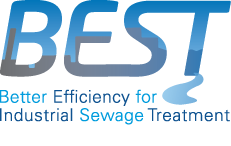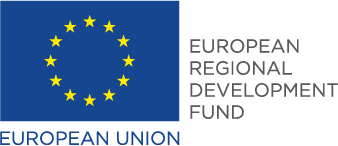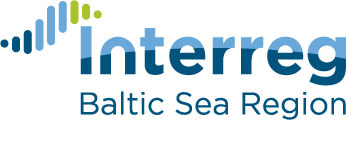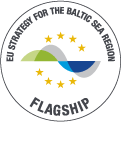Investments and pilots at WWTPs and industries
Altogether four project partners invested in new solutions for industrial waste water treatment, and furthermore, three partners created and tested pilot devices and methods to enhance wastewater treatment and sludge utilization. The investments and pilots took place both in municipal waste water treatment plants (WWTP) and in dairy and food industries. Concurrently, the work aimed to improve cooperation between WWTP and its industrial clients:
1) Latvijas Piens cheese factory invested in process control and flotation facilities
At diary Latvijas Piens pre-treatment and better process control of biological oxygen demand and nutrient load were needed to enhance the treatment results at Jelgavas Udens municipal WWTP.
Read more about Latvijas Piens investment and watch video
2) Epiim cheese factory in Estonia invested in a regulation tank for pre-treatment of effluents
Epiim has already established pre-treatment facilities in forms of a flotation process but to optimize the treatment process at municipal Põltsamaa WWTP, effluent flows should be further regulated.
Read more about Epiim investment and watch video
3) Põltsamaa waste water treatment plant in Estonia invested in analyzing equipment for monitoring industrial effluents
Adequate monitoring of industrial effluents ensure sufficient capacity of the WWTP during high flows and sudden peaks of industrial effluents. Põltsamaa wastewater treatment plant is receiving wastewaters with high biological oxygen demand and nutrient contents from food production industry and dairy production of Epiim company.
Read more about Põltsamaa WWTP investment and watch video
4) Doruchów Commune in Poland invested in phosphorus filtering system enabling nutrient recovery for industrial waste waters
Doruchów Commune separated treatment of industrial and municipal wastewater and built a new treatment line for industrial wastewater treatment. The new treatment line includes a tertiary filtration of phosphorous based on calcium silicate, which removes phosphorus without any chemicals and enables full phosphorous recovery, because the used filter media can be utilized as a fertilizer.
Read more about Doruchów Commune investment and watch video
5) Leszno water utility (WWTP Henrykowo) in Poland piloted co-digestion of sewage sludge and waste from food industry
The investment demonstrates optimal utilization of industrial sewage and sludge for energy production. Leszno water utility evaluated the potential benefits and challenges of utilizing effluents from meat processing industries, stockyards and growing industrial zones containing heavy metals and other harmful substances for co-digestion of sewage sludge and selected biodegradable waste. A pilot-scale installation for fermentation helped to reflect the process taking place in the fermentation chambers and forecast actual fermentation conditions.
Read more about Leszno water utility piloting
6) Tallinn University of Technology (TUT) in Estonia piloted various post-treatment technologies for the removal of phosphorus and heavy metals in the wastewater treatment plant
TUT studied a total of 14 different technological solutions, including both chemical and physical treatment technologies. They furthermore assessed impact of the studied technological solutions on the removal of organic loading (COD, BOD) and nitrogen removal. The study also analysed investment and operating costs related to the various post-treatment technologies.
Read more about Tallinn University of Technology piloting and watch video
7) Riga Technical University (RTU) in Latvia carried out pilot experiments aiming to evaluate the effectiveness of moving bed biofilm reactor (MBBR) technology for industrial wastewater treatment
Food – including milk, fish, and meat- processing industries generate high-strength wastewaters with highly variable salt concentration resulting from the disinfection of equipment. Shock loads of high salinity may disturb biological treatment processes at WWTP due to osmotic pressure shock and cell lysis and thus compromise effluent water quality. The pilot experiments aimed to evaluate the effectiveness of moving bed biofilm reactor (MBBR) technology for industrial wastewater treatment and to test the effect of short-term discard of high concentration of the sodium chloride on the biomass in MBBR.
Read more about Riga Technical University piloting
Why
Wastewaters from food and dairy production have high organic (BOD) and nutrient pollution content, and furthermore, the amount of sewage depends on production processes and can fluctuate significantly, which causes capacity problems for receiving municipal WWTPs. Technical solutions for pre-treatment and regulation are often rather simple and cost-efficient. In the BEST project, the technical solutions developed and implemented jointly by municipalities and industries will demonstrate case-examples that ensure both efficient treatment and recycling of nutrients at the municipalities receiving wastewaters from food and dairy production.
Although the challenges in treatment of industrial effluents are related to techniques, another equally important aspect is the institutional practices: joint planning, communication and cooperation between industrial, water utility and municipal parties as well as local or regional permitting authorities. The project activities will demonstrate in practice how, in addition to well-planned and cost-effective technical investments, development of better management and cooperation between stakeholders plays a key role in improved treatment of effluents.
Responsible partners
Leszno municipality
Põltsamaa Vesi
Epiim Tootmine
Latvijas Piens
Doruchow Commune
Riga Technical University
Tallinn University of Technology



